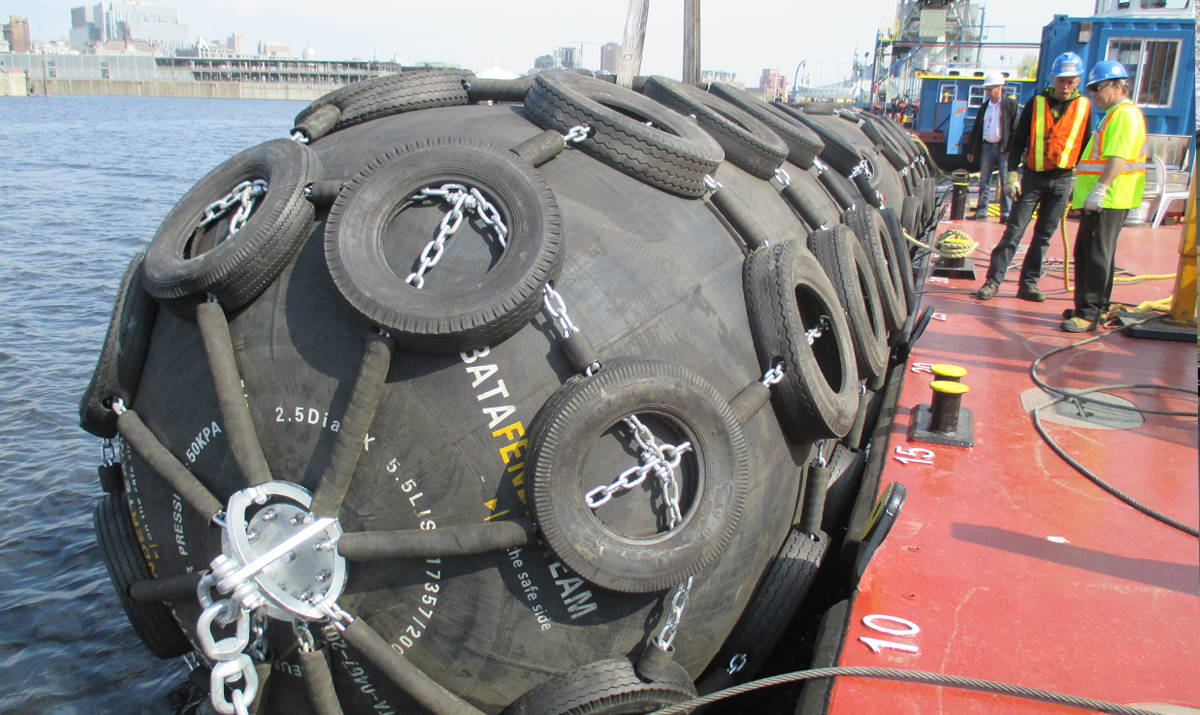Pneumatic fenders are designed to help extend the lifespan of watercraft and boats by acting as an additional layer of protection against scrapes and other harmful collisions with other vessels or structures.
Pneumatic fenders have been around since the early 1800s, when the first ones were created from wood, which was later replaced by rubber due to its flexibility and durability in different weather conditions. Today several different types of pneumatic fenders can be used in various industries.
It’s essential to choose the right pneumatic fender for your boat, as each one has unique benefits and limitations depending on the size of your vessel, the nature of your boating needs, and how much you’re willing to spend on high-quality marine equipment.
Main Characteristics of Pneumatic Fenders
- Pneumatic fenders are designed with a non-rigid, airtight membrane supported by sturdy buoyancy tubes.
- They are installed on a ship’s hull between its side and pontoons. Pneumatic fenders help to stabilize vessels in shallow waters.
- They also serve as shock absorbers that shield a ship from unnecessary damage during berthing or vessel-to-vessel contact.
- Energy absorption is achieved by air pressure. Pneumatic fenders are highly versatile, as they can be used to work on almost any vessel in any situation.
- High safety level. When working with pneumatic fenders, getting injured or caught underneath a falling fender is impossible because no equipment is attached to them.
- However, safety measures should always be taken when using any fender for safe operation.
Types of Pneumatic Fenders
1. Sling-Type Pneumatic Fenders
As their name suggests, Sling-type fenders are attached to a vessel by means of a sling. They are mainly used in ports as protection against vertical movements, either due to surge or misalignment of mooring lines. These fenders also provide some lateral protection against starboard-port actions due to waves. Sling type fender design is most suitable for vessels with no swing movement between vessel and structure.
2. Hydro-Pneumatic Fenders
These fenders utilize water pressure to create air barriers when vessels move closer together. They are equipped with a high-pressure air tube that is regulated by a hydrostatic control system. These fenders can be used for high speeds, heavy load requirements, and deep-water and coast applications. These units can work at temperatures up to 120 degrees Celsius for systems installed on oil tankers. Using these units, designers can adjust cushion pressures manually or automatically to fit changing weather conditions or loading conditions.
3. Pneumatic Fender with Tire & Chain Net
Tire & Chain fenders are designed to be attached to a tire or wheel on a vehicle. They allow for flexible positioning, which is useful when you need protection from splashes but doesn’t want to attach fenders to your trailer permanently.
Tire & Chain fenders come in a full-length (two-half lengths) design or just one-half length. They feature netting along with a tailboard that acts as a splash guard, preventing dirt and water from being thrown onto you as you drive.
Conclusion
The main difference between pneumatic fenders and fender extenders is that pneumatic fenders are filled with air to make them more buoyant. In contrast, fender extenders are blocks of wood or metal attached to a boat. Pneumatic fenders, when inflated, can extend up to 3 feet from a boat’s hull. They’re used primarily for protecting ships when they dock and undock by softening any impacts with other boats or dockside objects.

